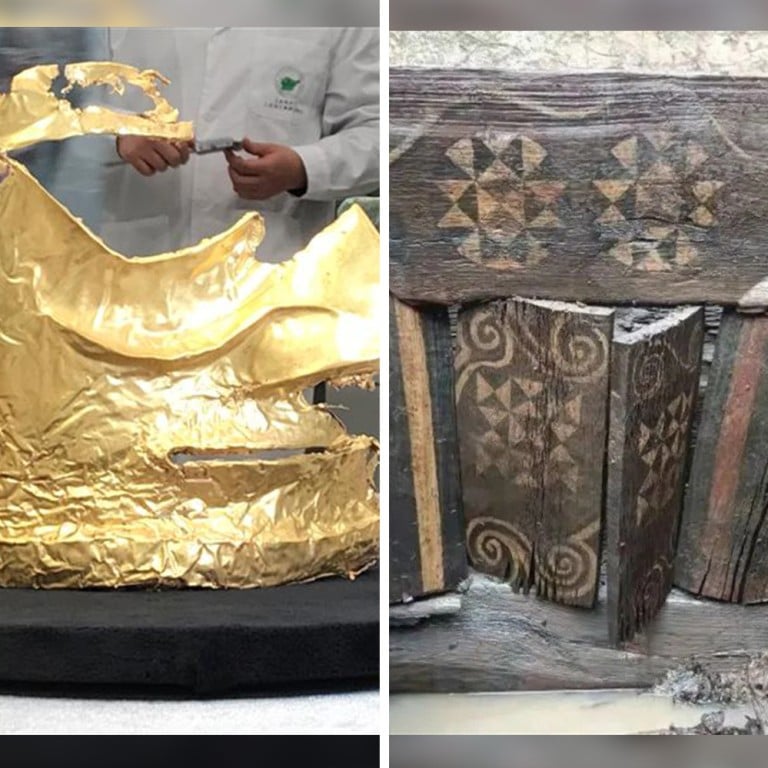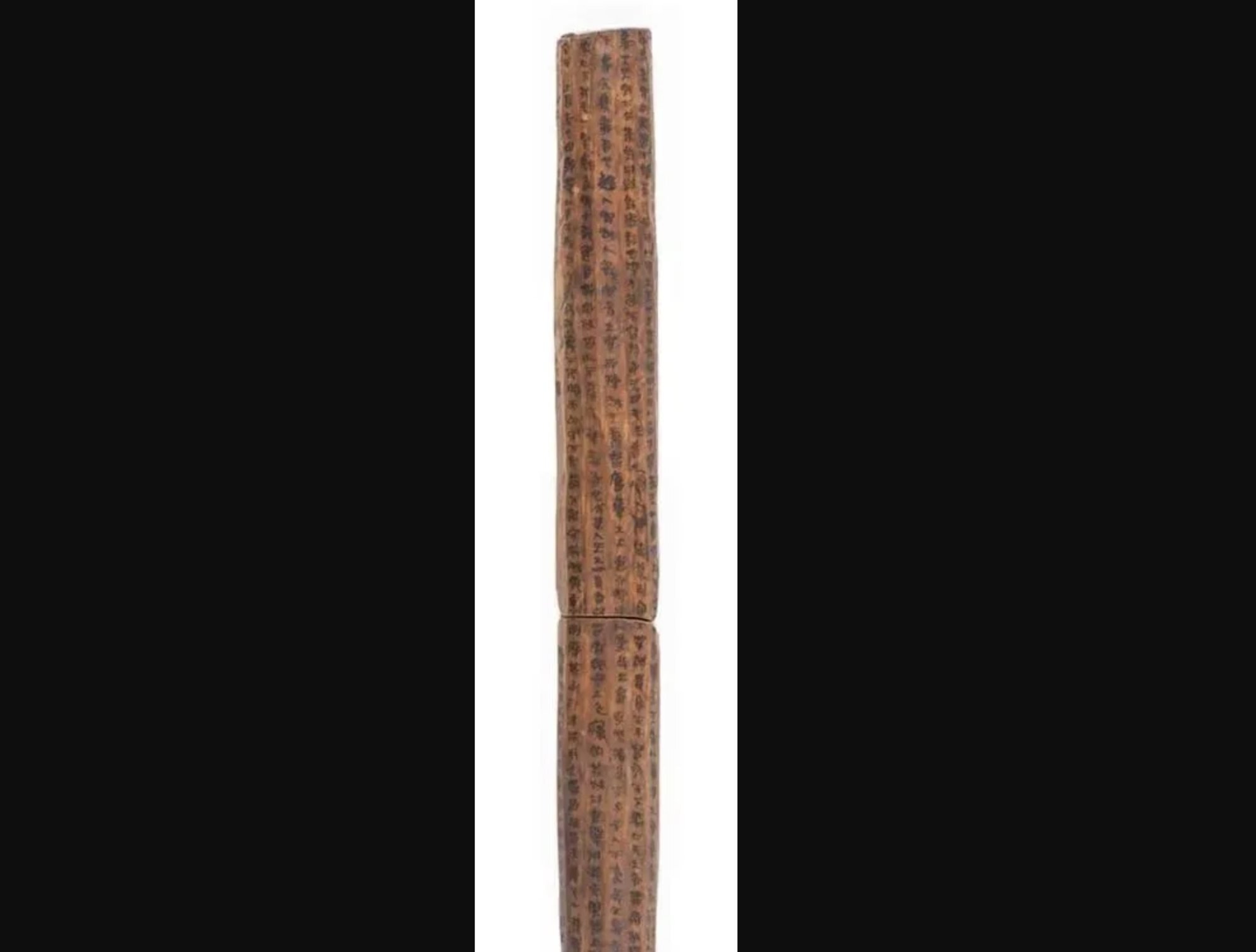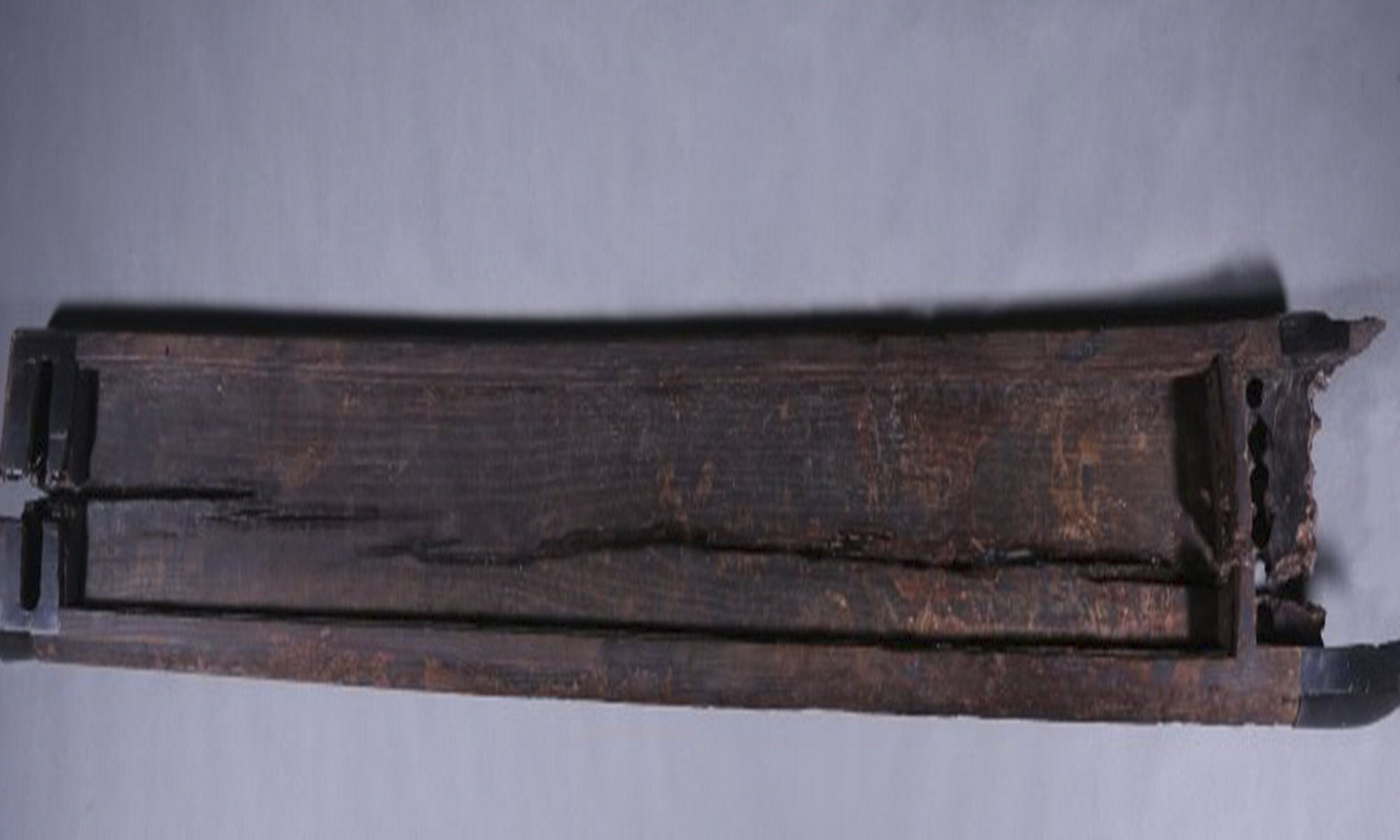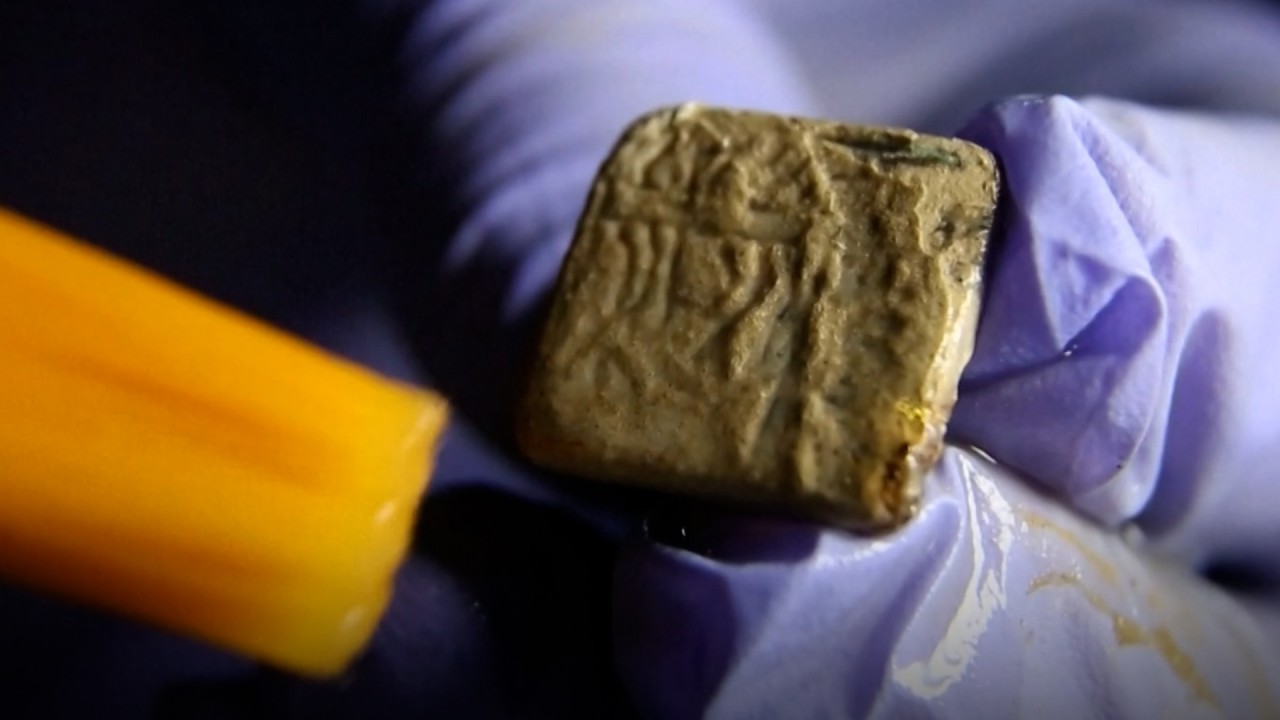
Chinese government reveals its most significant archaeological breakthroughs of 2021
- The discoveries at Sanxingdui became a global sensation in 2021, highlighted by beautifully preserved gold masks
- Other discoveries included finding an ancient essay, the son of a princess and tools from 130,000-year-old people
For Chinese archaeology, 2021 was a banner year highlighted by the global breakthrough that was the beautifully preserved ancient gold masks discovered at Sanxingdui.
Here are the top Chinese archaeology discoveries of 2021, according to the central government.
1. Breakthroughs at Sanxingdui

It would be impossible to accurately discuss recent Chinese archaeology without mentioning the site at Sanxingdui, which researchers estimate is around 3,000 to 3,200 years old.
In September, scientists announced an entirely new slew of artefacts uncovered at the site, many of which are contributing to a rethink of the earliest days of Chinese civilisation.
2. Written characters from the Warring States period

There is nothing quite like finding text on artefacts because it offers direct insight into the thoughts of our ancient ancestors.
The text is believed to be an essay from a counsellor who was trying to convince the Qin dynasty emperor at that time, Qin Shi Huang, to accept a truce after five of the eastern kingdoms created an alliance that temporarily stopped the Qin’s march across China.
The emperor apparently did not heed the advice, as it would eventually conquer and unify China in 221BC.
3. A seal reveals royalty of the Tibetan Tubo Kingdom
Scans performed on an ancient Tibetan seal last year revealed that it probably belonged to the son of a princess in the Tubo Kingdom (618-842), which was a consolidation of Tibetan tribes during the Tang dynasty (618-907).
The carving on the seal says “seal of nephew Azha King”, which helped archaeologists determine that the tomb was connected to the king of Tuyuhun, a Tibetan tribe that ruled what is now modern-day Qinghai province in northwest China.
While excavation on the ancient Tibetan tomb began in 2018, the seal was not found until late-2020, followed by a careful cleaning before it could be scanned.
4. Ancient axes redefine the movement of ancient people

Hand-axes from the palaeolithic period found in Qinghai province shed light on how people migrated from Eurasia to China.
Discovered on the Piluo archaeology site on the Tibetan plateau, the axes are believed to be around 130,000 years old.
Interestingly, scientists found more contemporary artefacts from 30,000-50,000 years ago that showed more similarities to older local societies rather than cultures that may have been imported from people who lived further west.
5. Identifying a noble from the Zhou dynasty

Archaeologists announced in December 2021 that the owner of a tomb dating back to the Zhou dynasty (1046-256BC) was a noble.
The scientists were able to conclude his identity thanks to two weapons buried with the man. The descendants of a powerful king originally owned the weapons, so the fact that the man was buried with the weapons suggests he was of a high social rank.
Archaeologists also discovered an ancient stringed instrument called a zheng in the tomb. At 2.3m long, it is the longest zheng ever found.
6. A neolithic jade workshop at the Huangshan site
The Huangshan archaeological site in central China’s Henan province provided an essential window into the Yangshao culture, one of the first Chinese societies.
While the site has not produced a “wow” artefact on the scale of other discoveries on this list, it has painted a detailed picture of a complex society.
Scientists at the site have learned how Yangshao people leveraged waterways, how they interacted with other regions in China and what tools were necessary for people at the time.
One of the significant findings from last year were jade workshops, and a burial ground they believe was for a clan that specialised in jade manufacturing.


